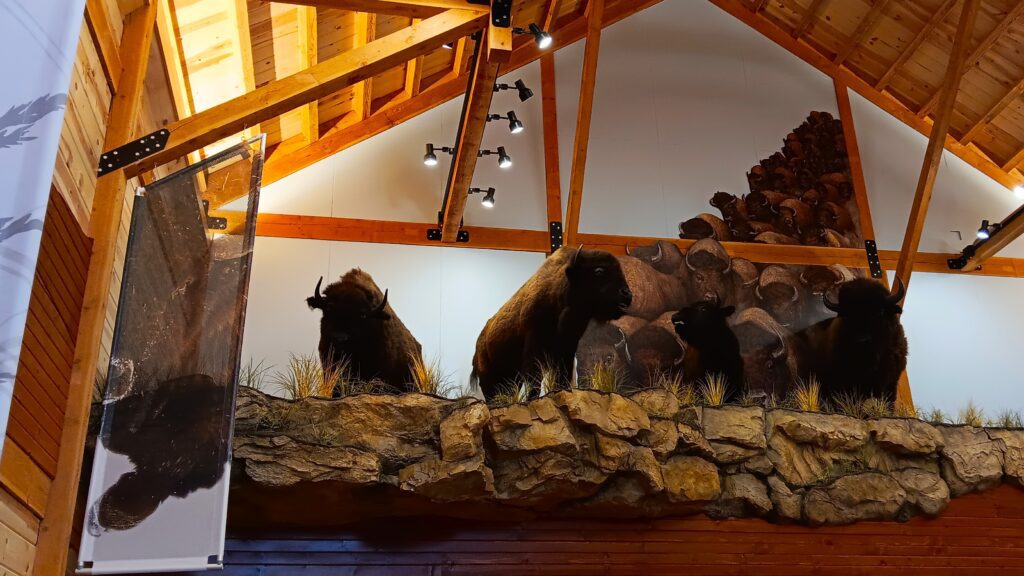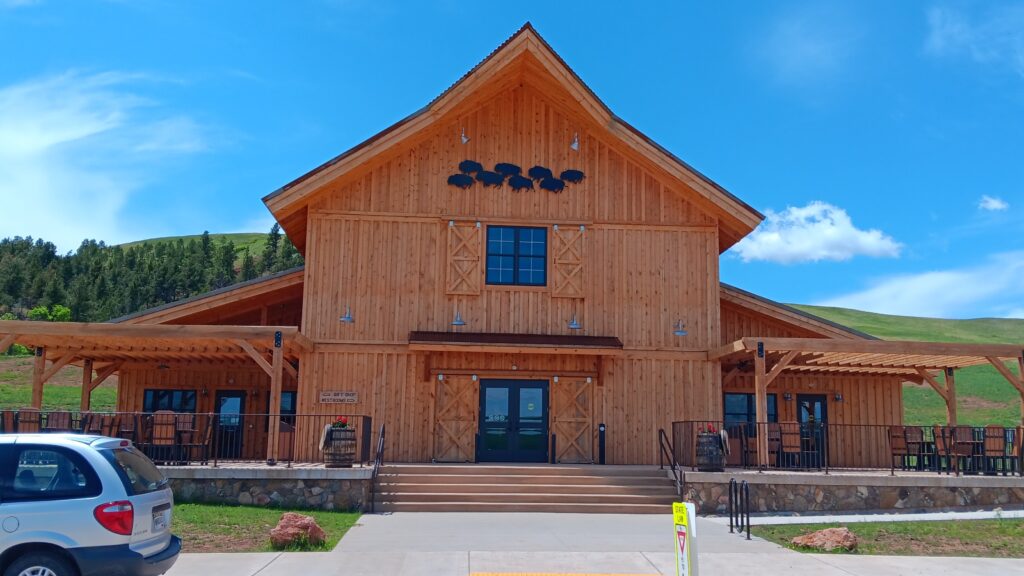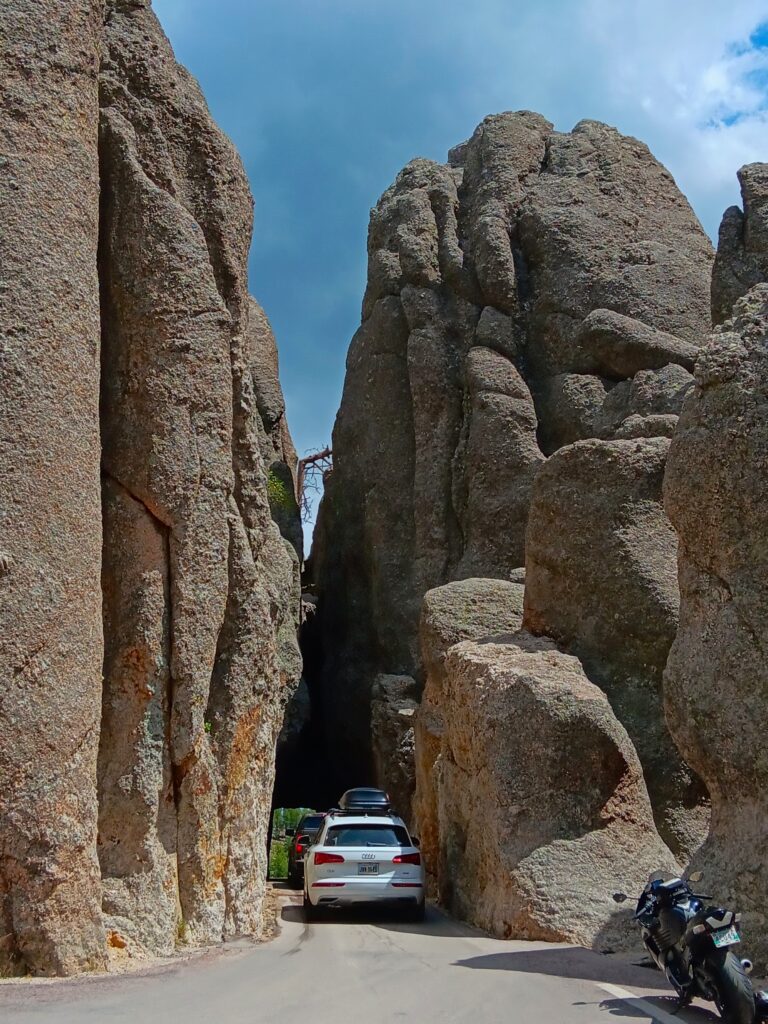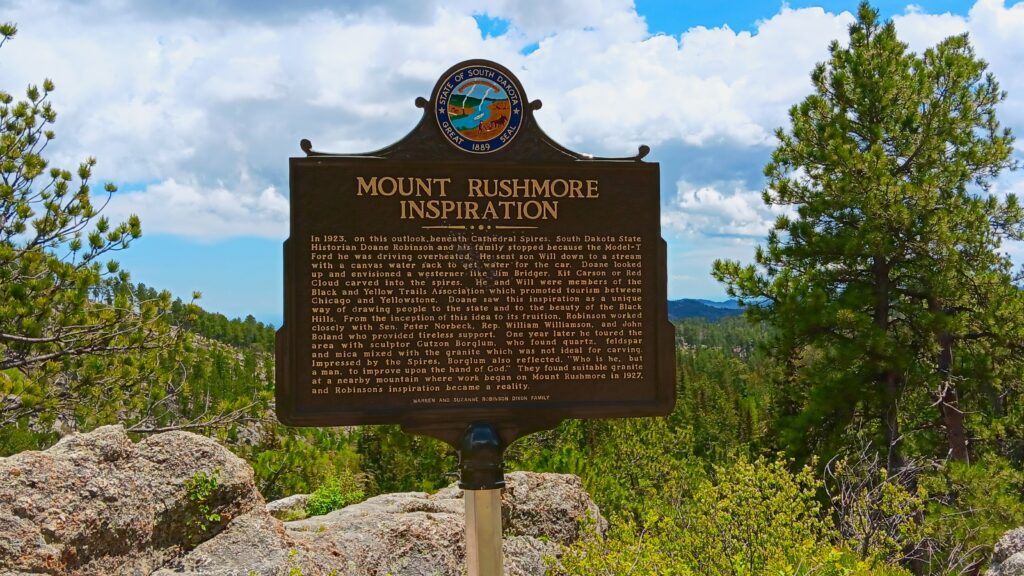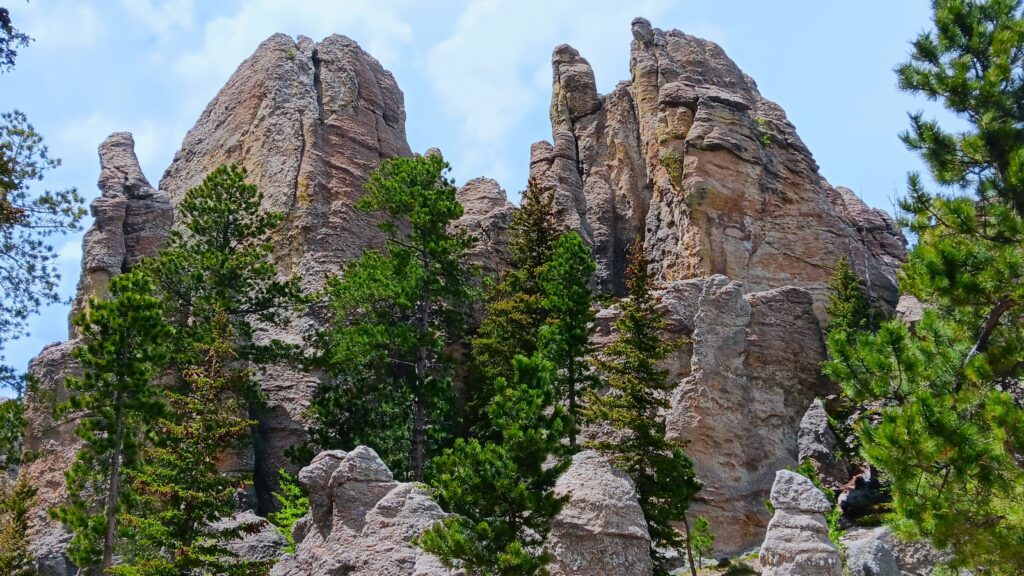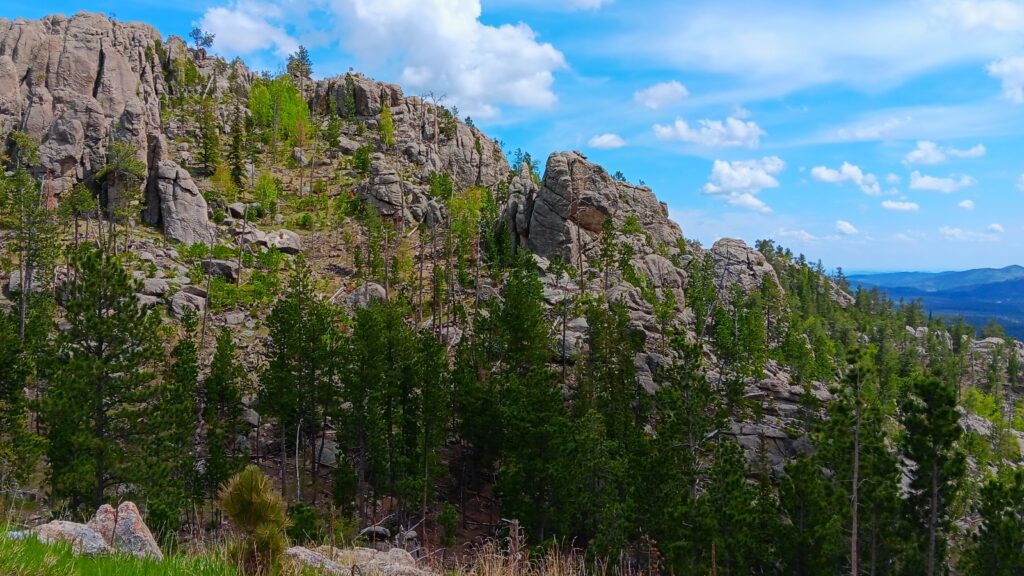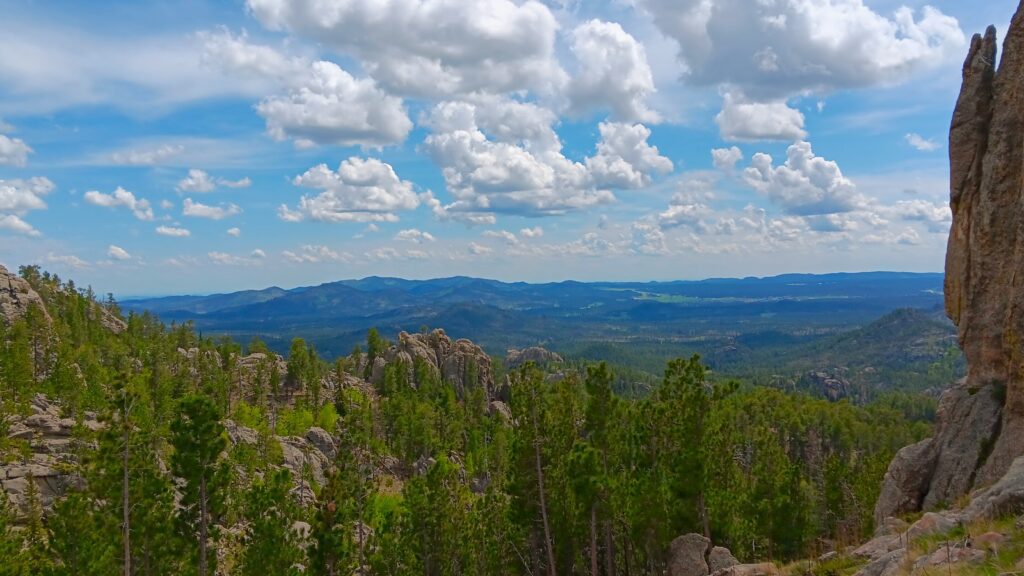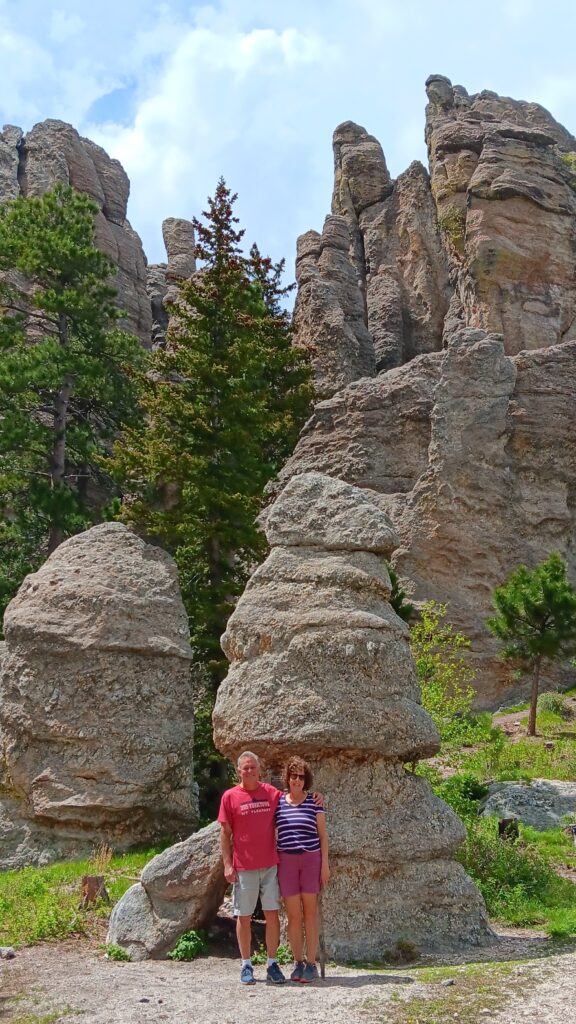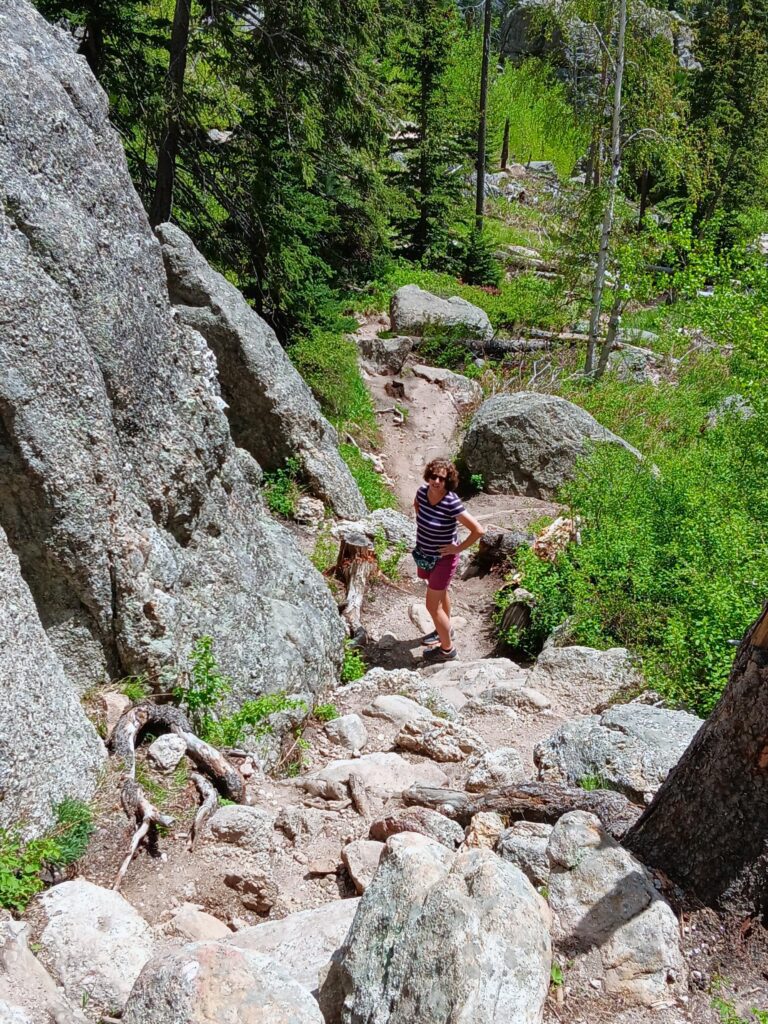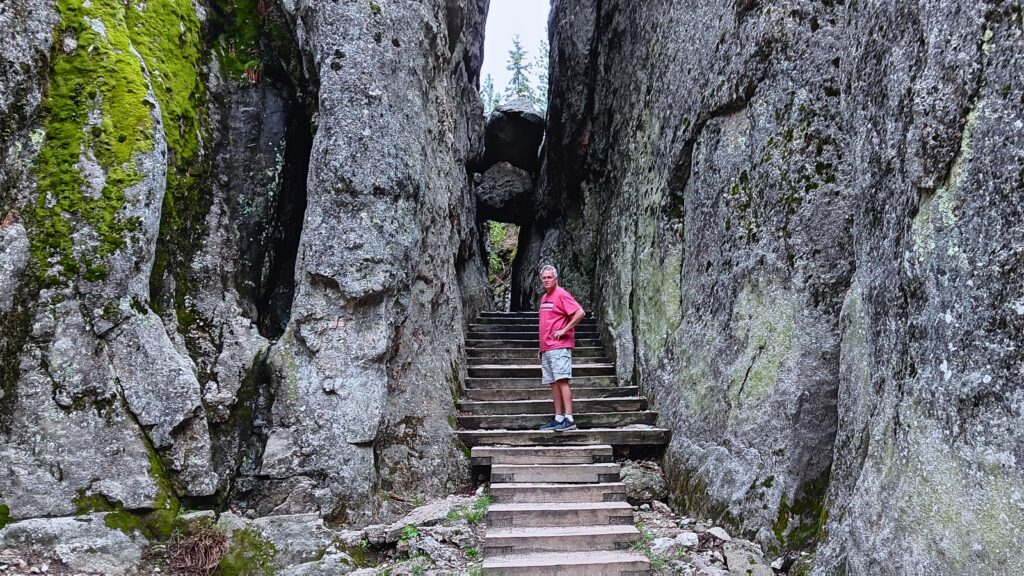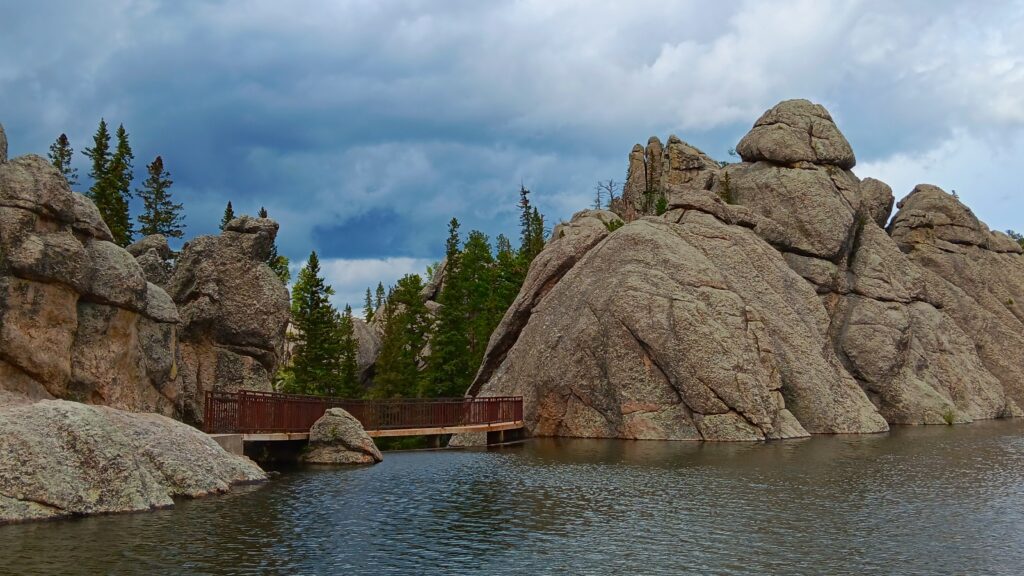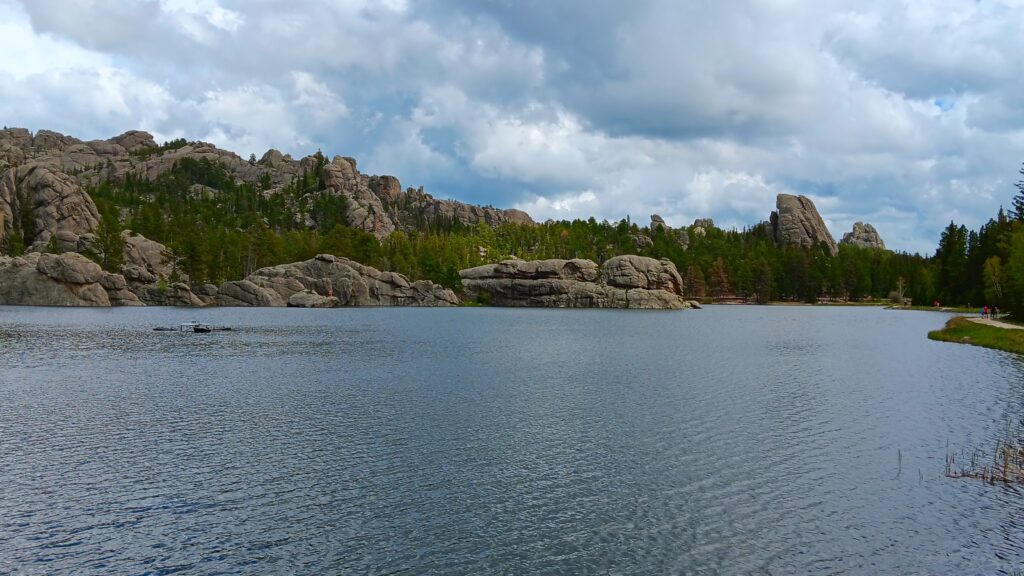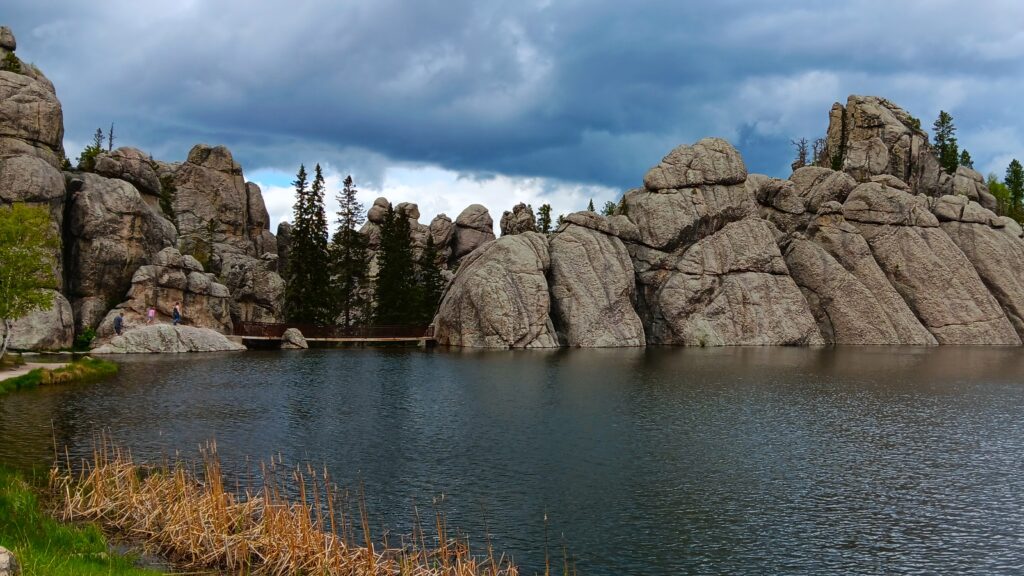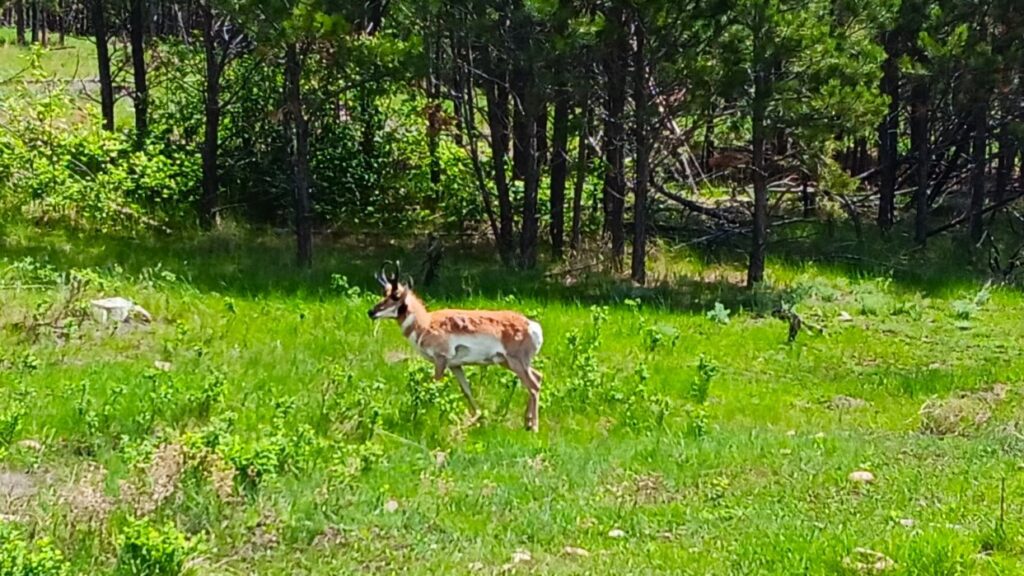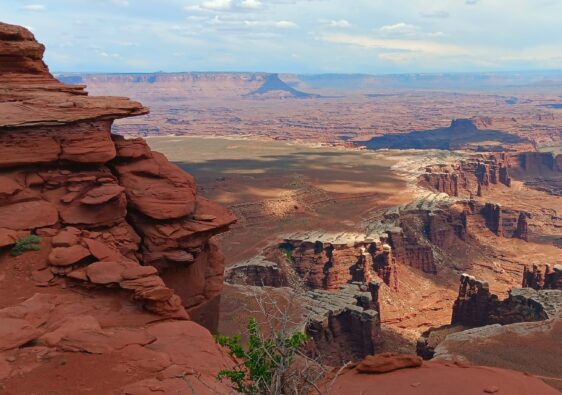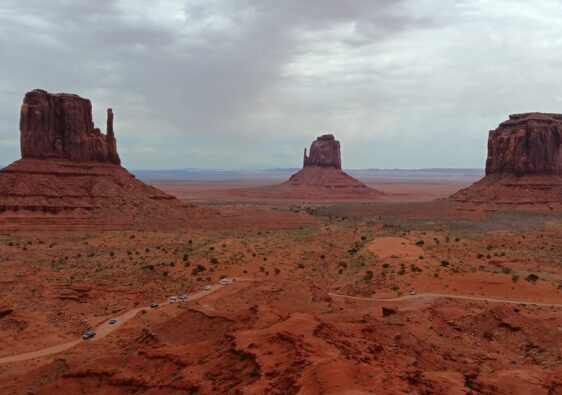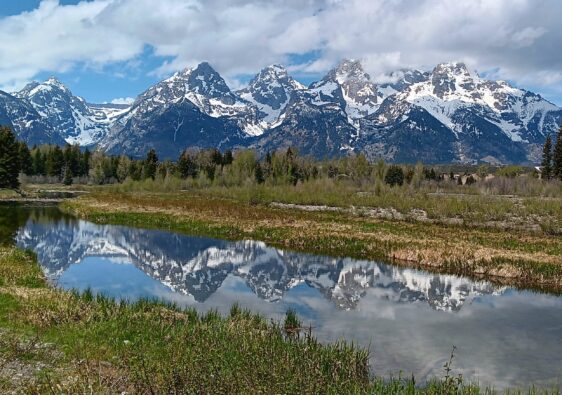The Black Hills is a scenic mountainous region western South Dakota and eastern Wyoming. We visited the area specifically to go to Wind Cave National Park, but found out there is so much more to see and explore in the Black Hills.
Devil’s Tower
Our first stop in the Black Hills region was Devil’s Tower National Monument, located in eastern Wyoming. There is a hiking trail around Devil’s Tower, allowing you to see this unique geological feature from all sides. Some people actually climb it too and we saw climbers about 2/3 of the way up the 867 feet climb. The Devil’s Tower is a significant place to many American Indian tribes. The story that caught my attention was told by the Kiowa tribe. In this story 7 little girls were playing when they were chased by bears. They jumped on a rock and begged the rock to save them. The Great Spirit caused the rock to rise up out of the ground, pushing the girls higher and higher. The bears tried to reach them, scratching the rock but broke their claws and fell to the ground. The legend says that the girls became the seven stars of the Pliedese, which is seen directly over Devil’s Tower in the winter sky.


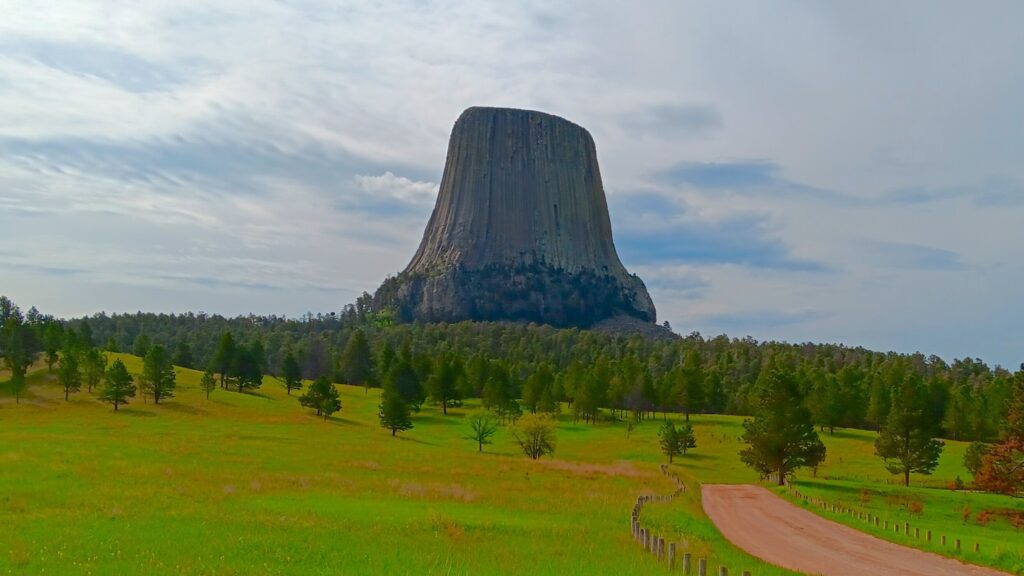

Jewel Cave National Monument
Jewel Cave National Monument, located near Custer, South Dakota, is one of the longest cave systems in the world. To date, approximately 215 miles of cave have been discovered, but air studies reveal that only 3 to 5 percent of the cave has been mapped, meaning that there is so much more to explore. During our tour, we learned about the early history of the discovery and exploration of the cave. In 1959, only about 2 miles had been discovered, when Herb and Jan Conn, rock climbers, looking for something to do during South Dakota’s harsh winters, first visited the cave. They were immediately entralled, and over the next 20 years, spent close to 6000 hours in the cave, mapping more than 64 miles of cave. Today, only very experienced covers are allowed to explore to map more parts of the cave.
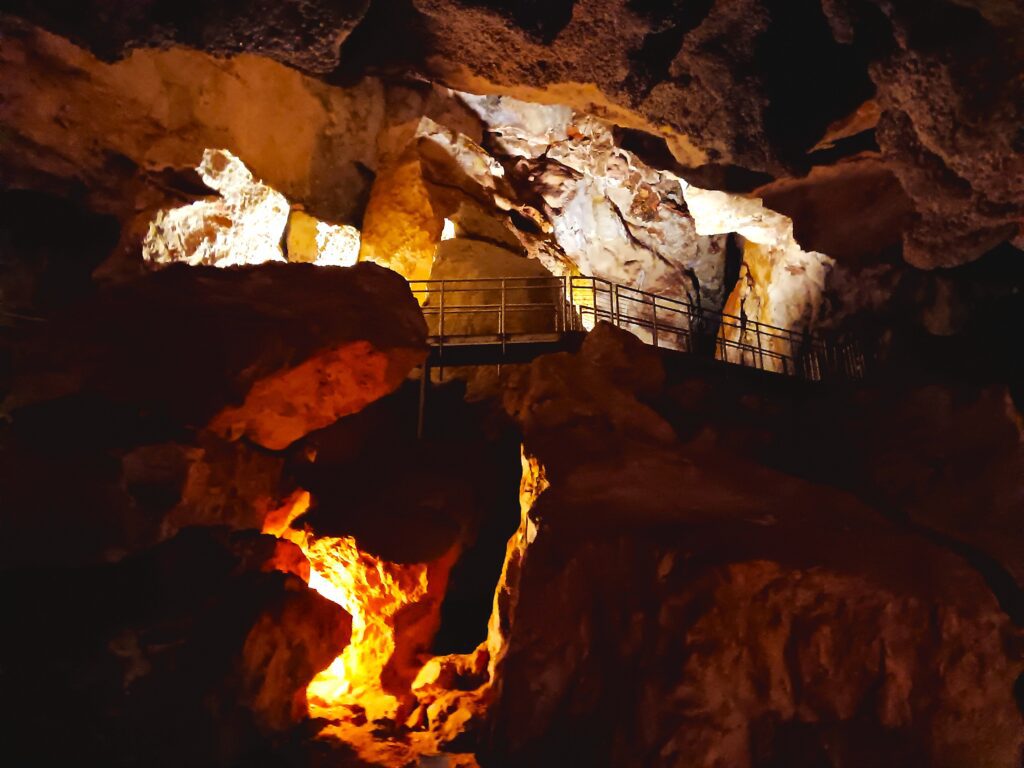

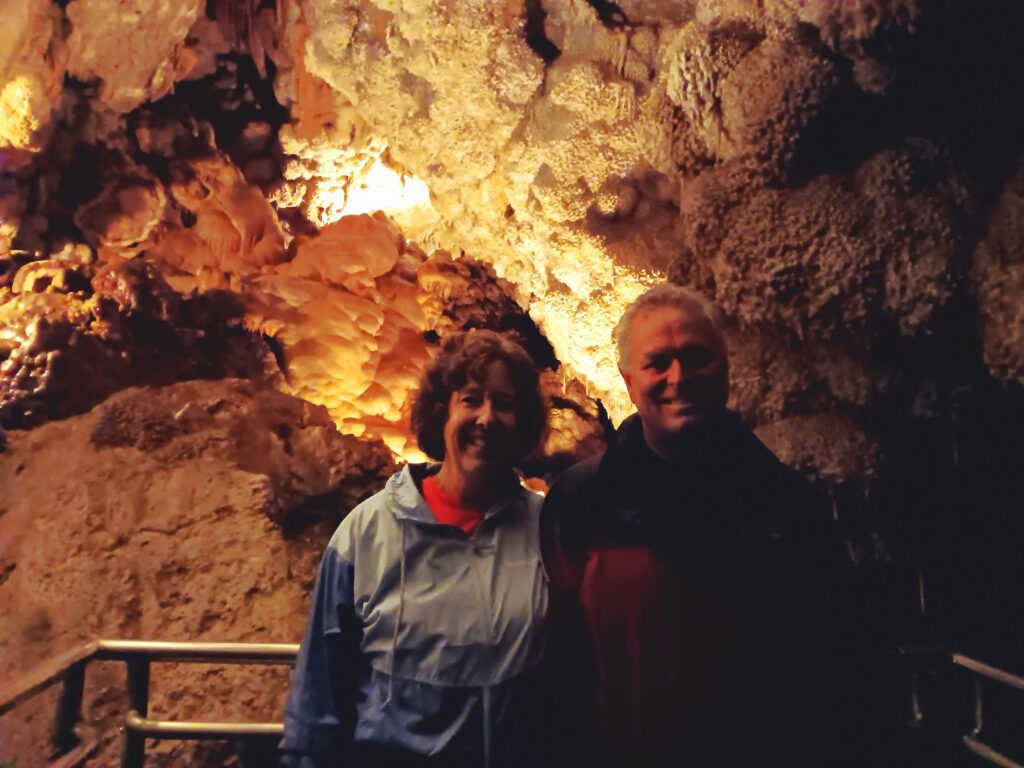



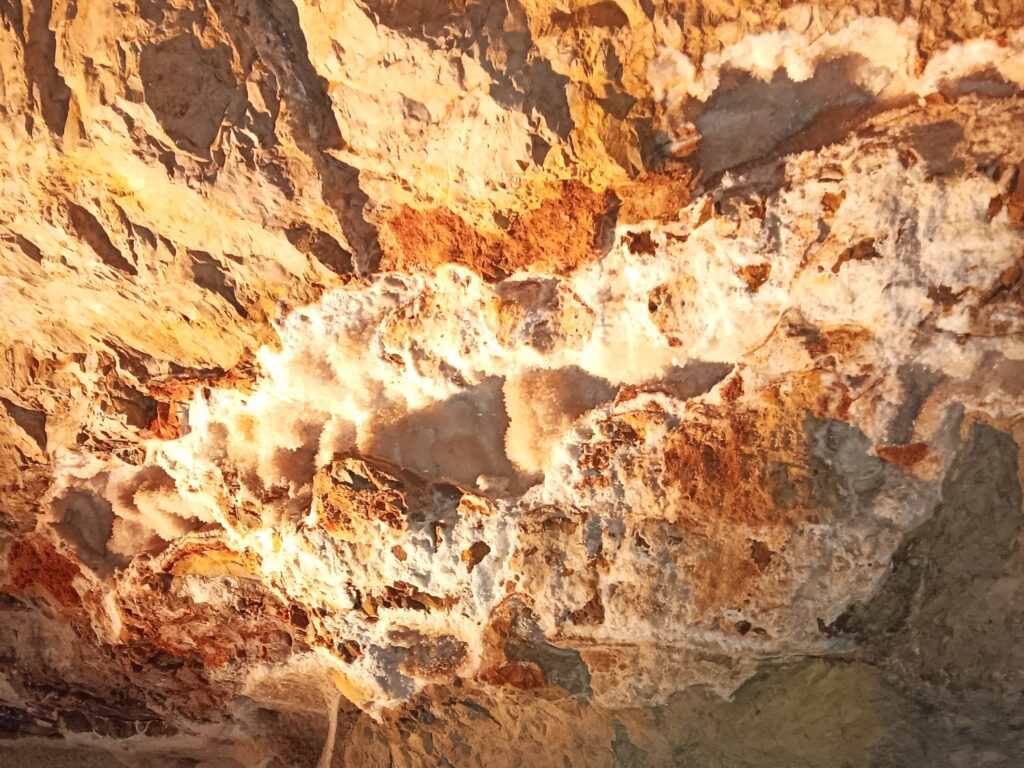

Mount Rushmore
Mount Rushmore National Memorial was a very quick stop for us. When driving there, we encountered a thunderstorm that quickly produced over an inch of hail. We were less than 3 miles away but pulled over to wait for better road conditions. Once it cleared enough, we drove in, parked, and walked up to the entrance. By that time, it was thundering again so we quickly walked in, grabbed a couple of pictures and made our escape, soaking wet! Maybe we will go again someday, but if not, at least we can say we saw it.
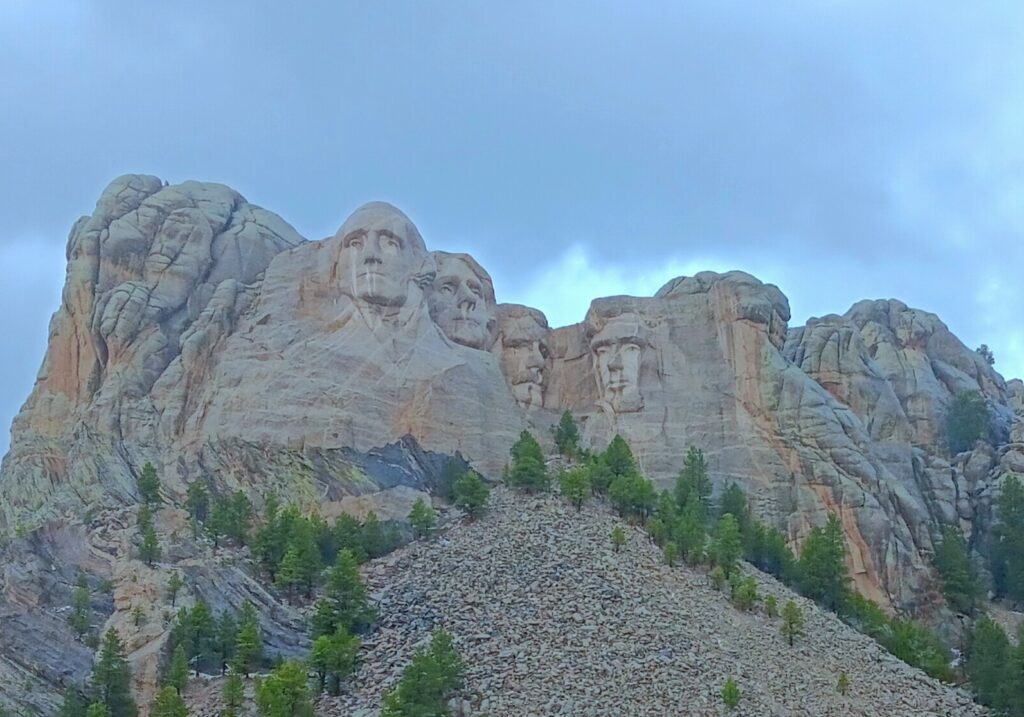

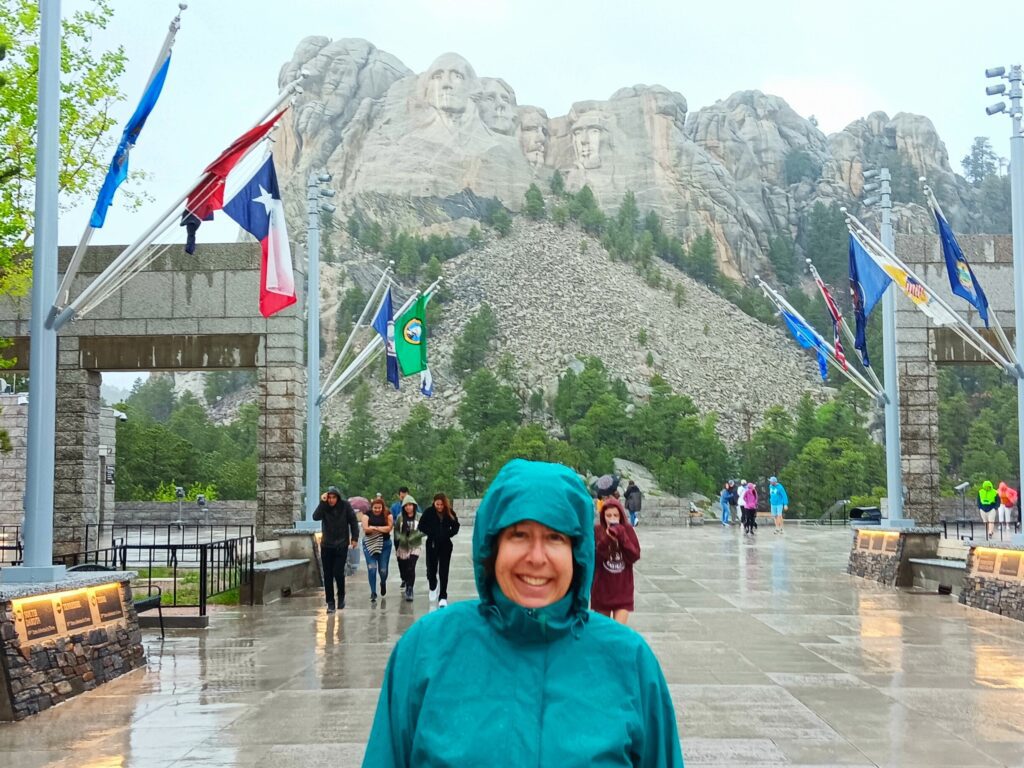

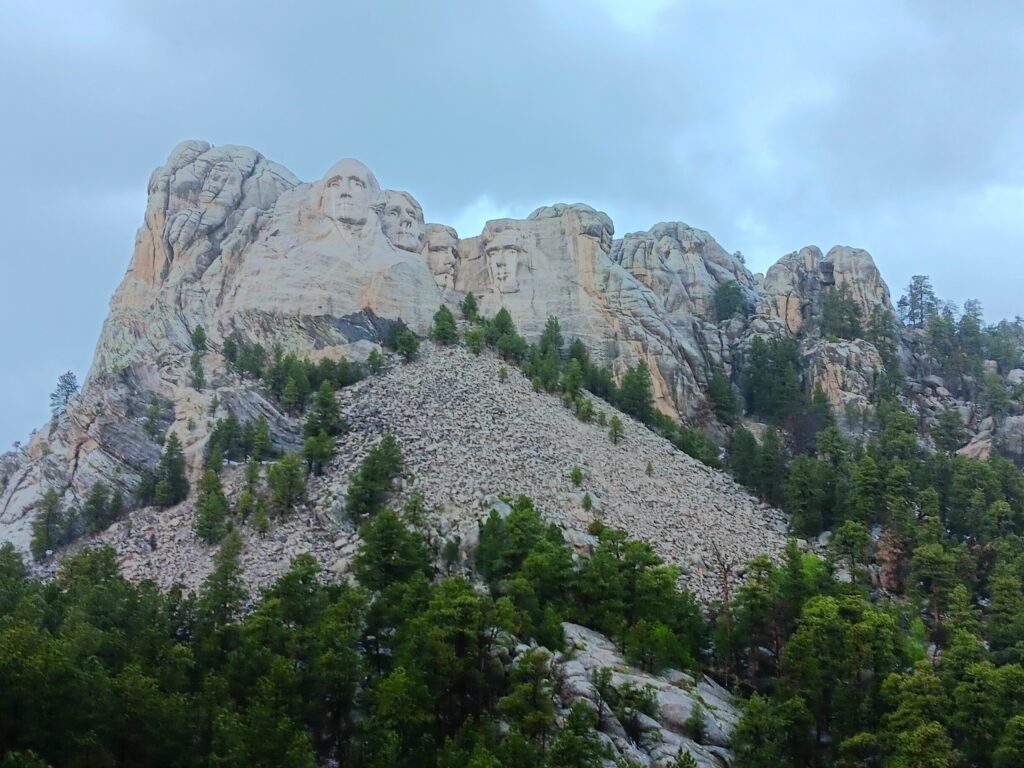

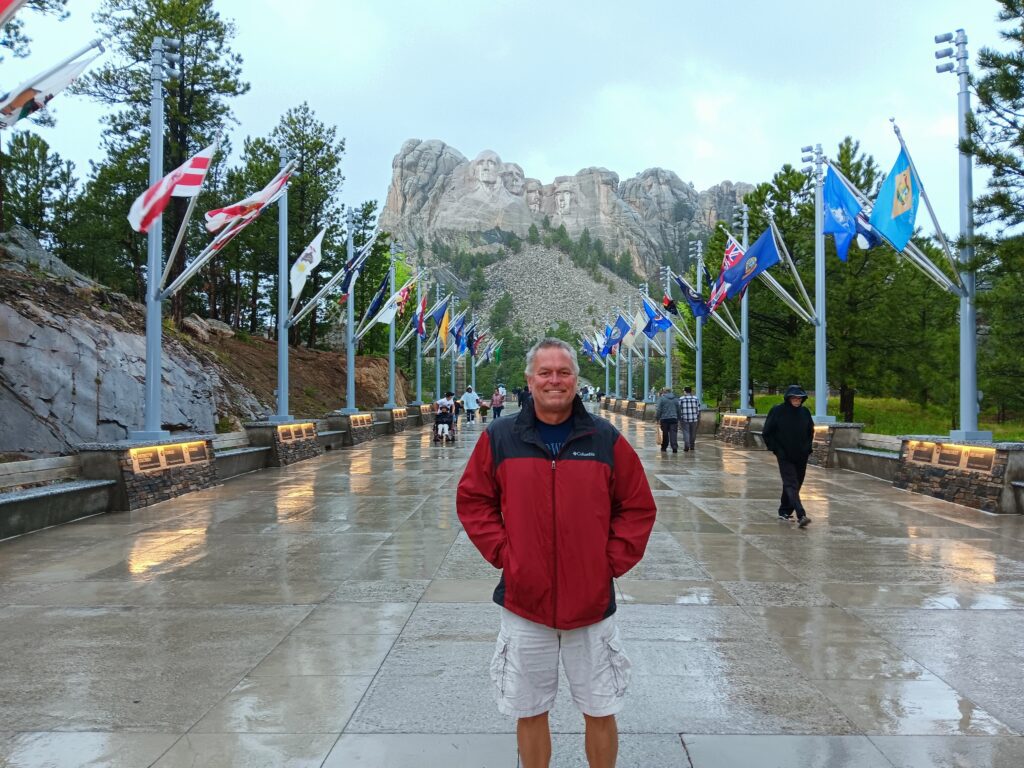

Wind Cave National Park
At Wind Cave National Park, we chose to do the Natural Entrance Tour. Our guide showed us the original Natural entrance, then took us into the entrance that had been blasted out over 100 years ago. We went down seemingly endless steps (300 total, most down, but some up, by the time we were done). This cave tour has more narrow routes than we encountered in Jewel Cave. Wind Cave is known for its abundant boxwood, found in small amounts in other caves. Boxwork has thin blades of calcite protruding from cave walls and ceilings, forming box like shapes. We saw this pretty much everywhere in the cave.
Our guide told us about the early history of tourism in this cave, with a 16 year old leading tours and sometimes losing his tour group as he got distracted. Keep in mind that those early tours were led by candle and had no paved paths to follow!


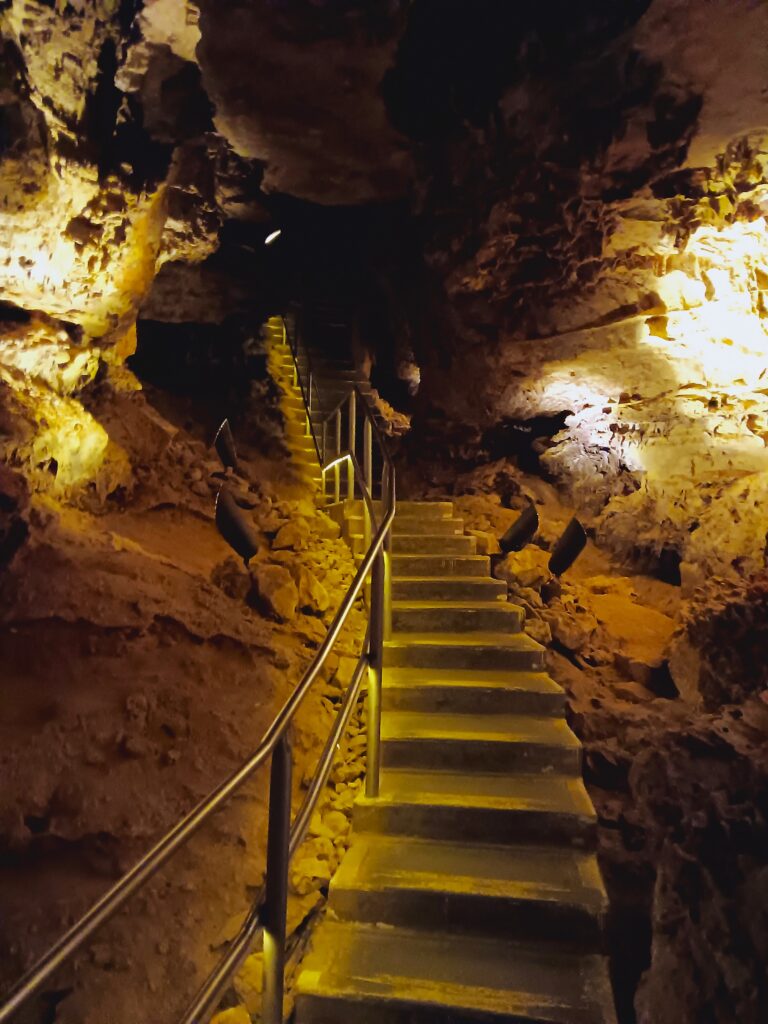

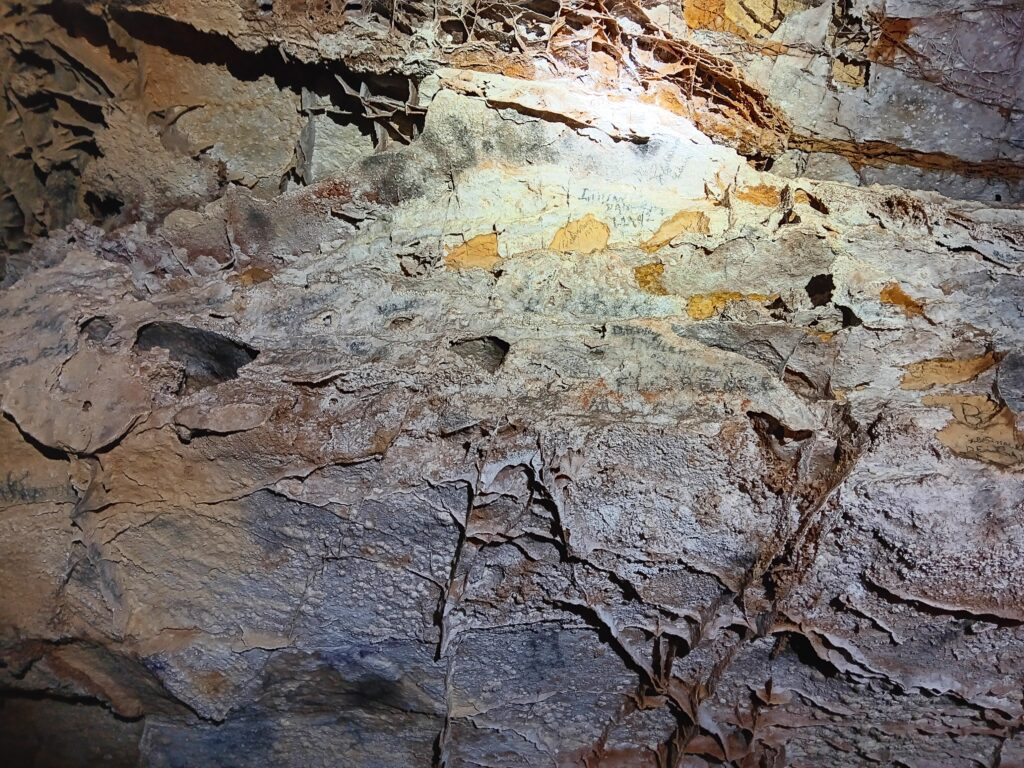

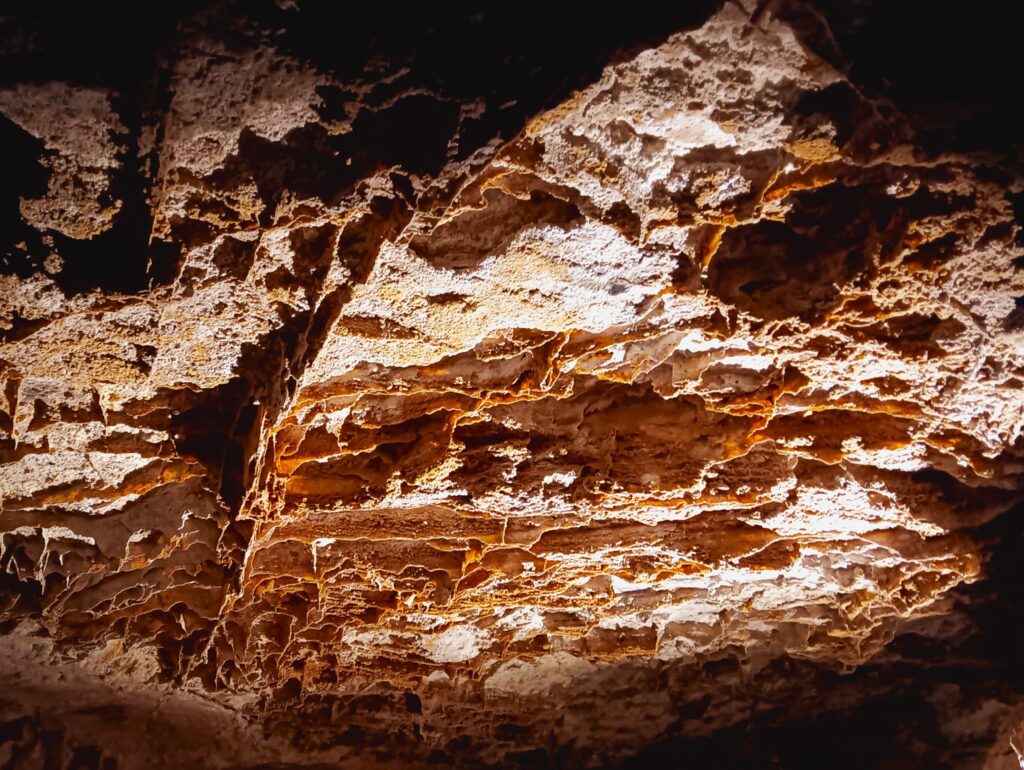

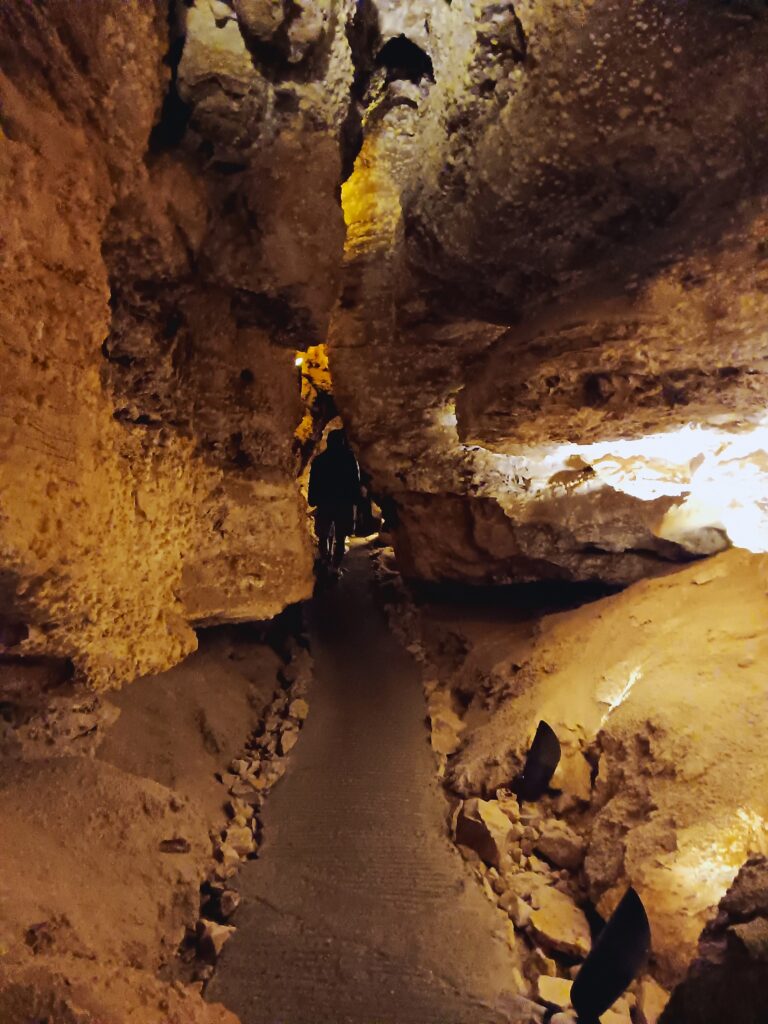

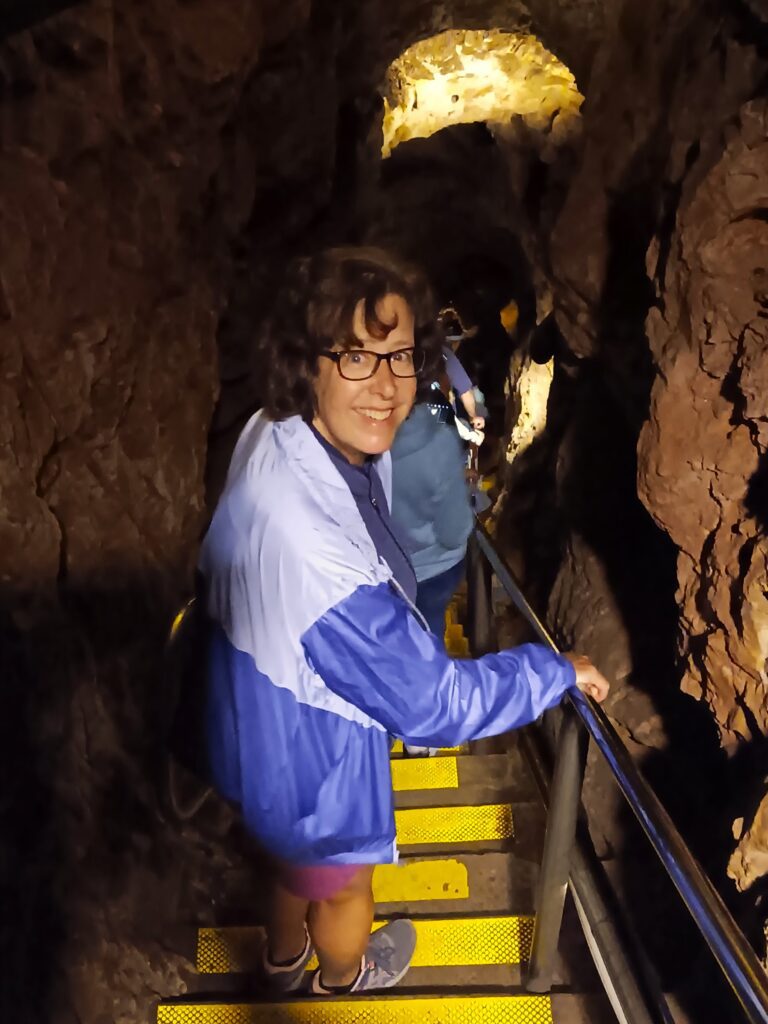

Custer State Park
In addition to the cave, Wind Cave has wildlife and hiking trails but, as we were looking at our options, Custer State Park got our attention. This 71,000 acre state park has a managed herd of bison that can be viewed along the Wilderness Loop road. We only saw them from a distance but we stopped at the new bison exhibit that explains why the herd exists, what it means to be a managed herd, and tells about their annual bison round up that attracts 20,000 visitors each September. The exhibit was very well done and informative.
We also did two hikes in the park. One was around Sylvan Lake, one of several small lakes in the park. Our second hike required us to drive up the Needles scenic route, going through a one way tunnel only 8.5 feet wide. That was plenty wide for us, but we watched several large pickup trucks squeeze their way through. The Cathedral Spires hike was beautiful and was actually the inspiration for Mt. Rushmore ( zoom in on the sign for more information on that).
We wish we had set aside more time to explore Custer State Park and the Black Hills region.


